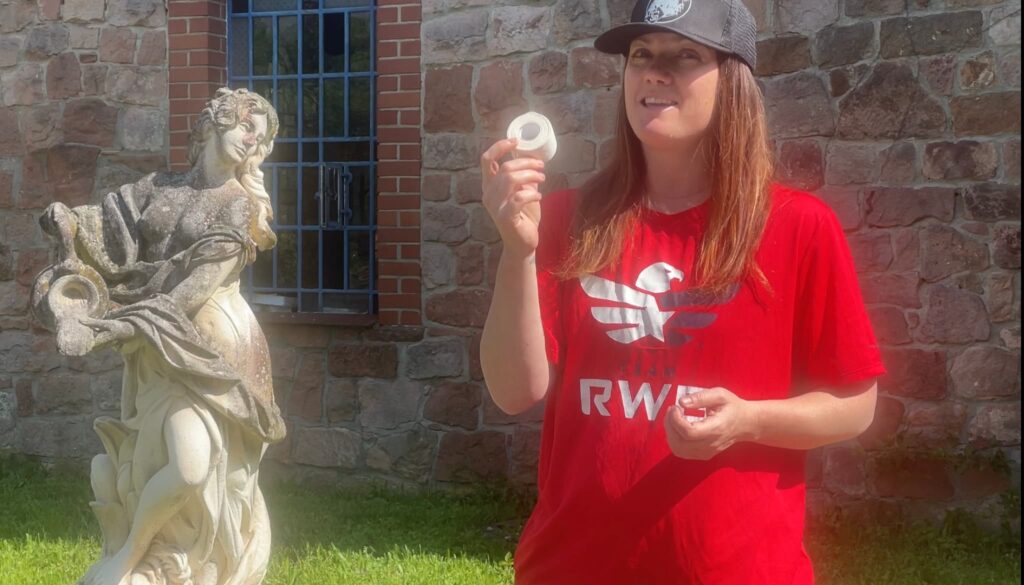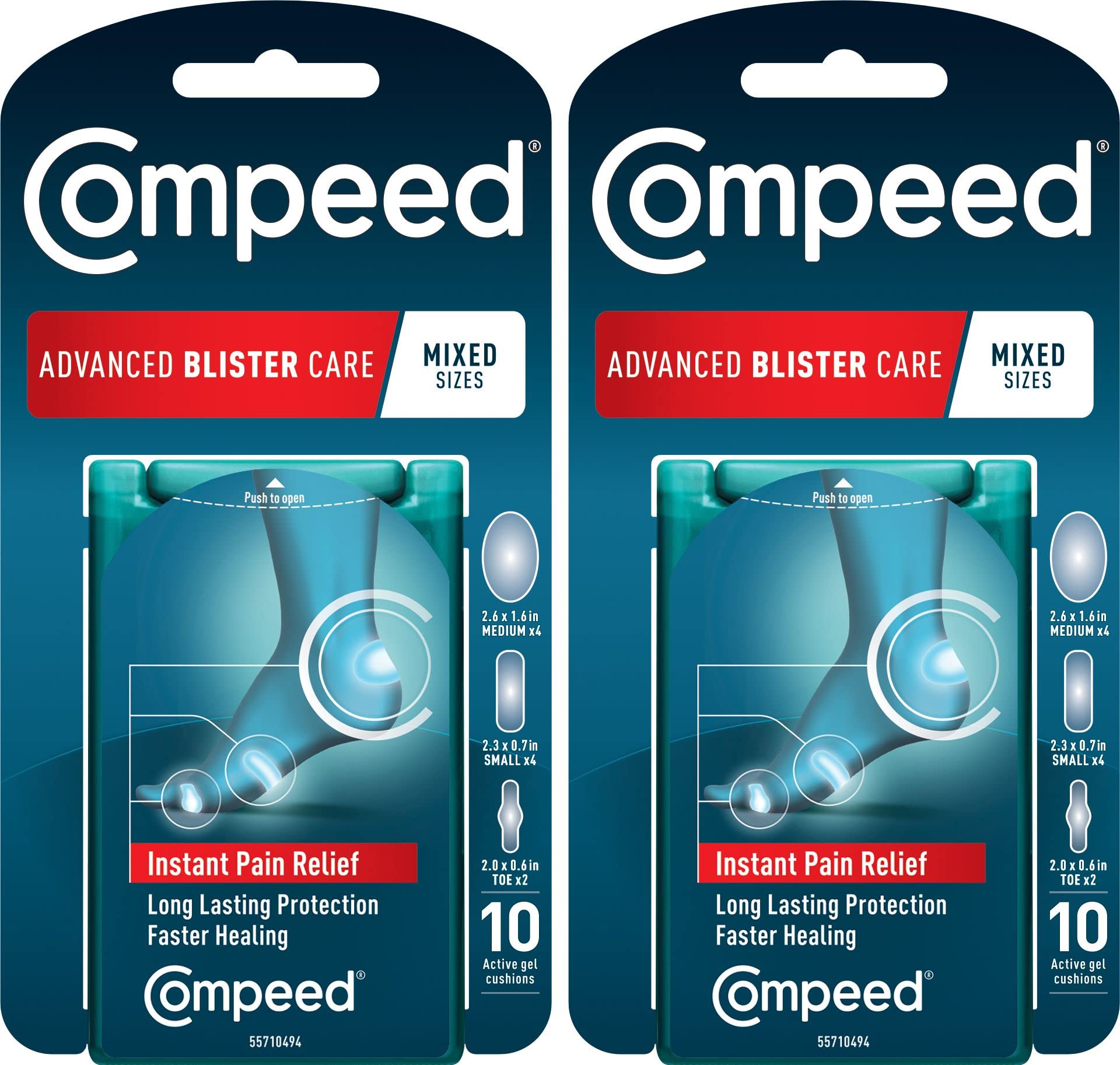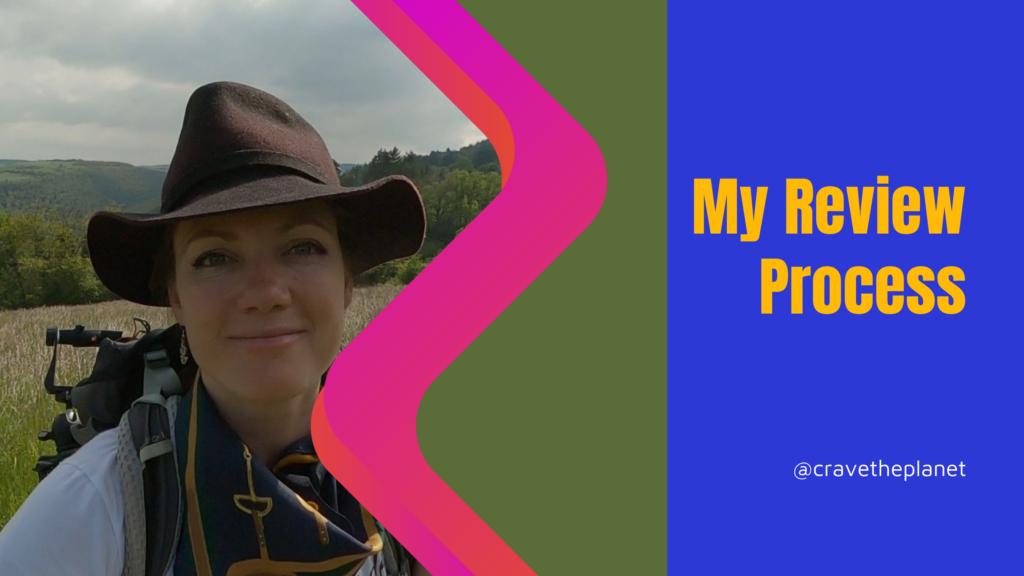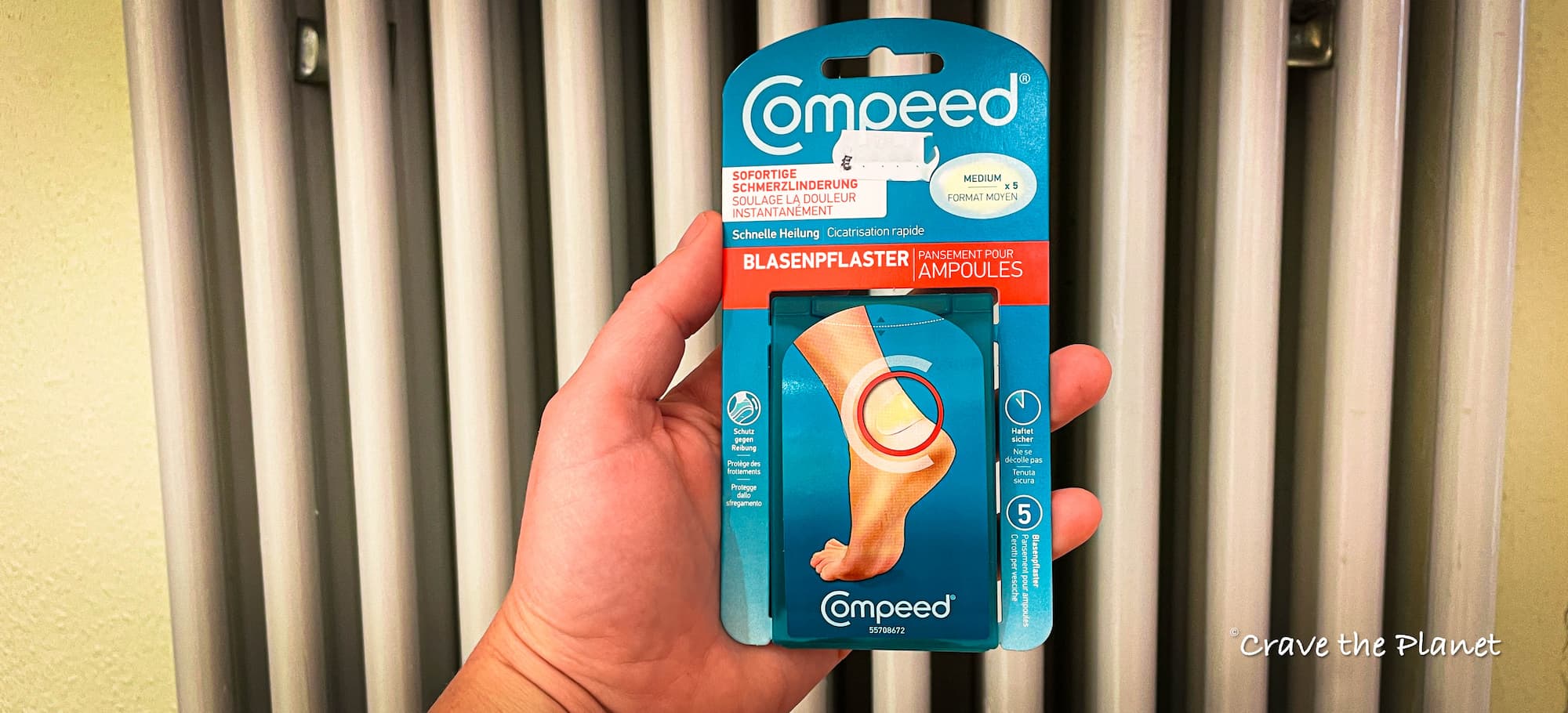
Hiking is a fantastic way to connect with nature, exercise, and challenge ourselves. However, with any outdoor adventure comes the risk of blisters.
As a lifelong runner, hiker and physical therapist, I often get asked how to prevent blisters and then what to do when the dreaded blisters occur on the trail.
Investing in a quality blister kit can be a lifesaver, as it will help you manage any hotspots, take care of existing blisters, and prevent new ones.

🎥 Read till the end to get to my Youtube Video on how to prevent a blister.
Blisters can make hiking uncomfortable and lead to sore calves and even plantar fasciitis from compensation, but they don’t have to ruin the fun.
To prevent and alleviate these issues, protect your toes when hiking and enjoy the experience–a good blister kit is essential for any longer hike, hut to hut hiking trip or backpacking experience.
What You Will Learn
Best Blister Kits for Hiking TL;DR
💡 ⚓️ Surprisingly, my time spent in the U.S. Navy really helped me learn how to take care of my feet (even more than my physical therapy graduate degree).
TL;DR: When it comes to choosing the right blister kit, it’s crucial to pay attention to factors such as the types of treatments included, their effectiveness, and how easy they are to use on the go.
Not all blister kits are created equal. The best blister kits will have a variety of treatment options to address different blister stages, from prevention to healing.
Blisters form when friction causes the layers of skin to separate and fill with fluid. So what do you need in a blister kit?
Consider searching for kits with:
- adhesive bandages
- blister pads
- antiseptic wipes for bacteria prevention
- kit’s size and weight are vital since packing light is essential for hiking
Quick Take: Are Blister Kits Worth it?
Based on my personal experience of trying out various blister kits, I highly recommend the Compeed Advanced Blister Care as the best option on the market.
The kit features a fully breathable and waterproof bandage that stays put even with day long hikes and provides both healing and comfort for hiking.
Top 3 Blister Kits for Your Packing List by Need
| Best Overall : For Guides and Leaders | Buy Now |
| Most Lightweight : Moleskin | Buy Now |
| Most Multifunctional : Sports Tape | Buy Now |
More Blister Kits:
- Compeed Advanced Blister Care (MY FAVORITE)
- Adventure Medical Kits
- Extreme Hydrocolloid Gel Blister Cushion
- Emergency Wound Closures
Read until the end to learn how to avoid blisters in the first place based on my military, hiking and medical experience.
🔥 ➡️ Related Reading – Hiking Advice from a Physical Therapist Hiking Addict:
Read my review of the 13 top hiking socks that can prevent blisters and my review of toe socks for hiking.
- More Buying Guides:
⌚️ Review of the Best Hiking Watches
My in-depth Review of Knee Supports for Hiking
7 Best Blister Kits for Hiking
My Review Process : Blister Treatment Kits
I’ve researched and compiled the top 7 blister kits to help you enjoy your hiking adventures without worrying about blisters. I’ve spent several hours researching and testing blister kits, aiming to find those that will not only make hiking more enjoyable but keep your feet happy and healthy as well.
Check out my carefully selected recommendations below:
1. Compeed Advanced Blister Care Mixed Sizes Pads : Best Overall

I highly recommend the Compeed Advanced Blister Care for effective prevention and treatment of blisters during hiking.
Pros
- Provides instant pain relief
- Promotes faster healing
- Offers long-lasting protection
Cons
- A bit pricey
- Could be difficult to remove
- Some users may experience skin sensitivity
I recently went on a hiking trip and brought the Compeed Advanced Blister Care with me, and I’m glad I did. The pack I purchased included 10 hydrocolloid patches in mixed sizes, which were perfect for treating blisters on my hands, fingers, feet, heels, and toes. I found the pain relief to be almost instant, and the cushioning provided optimal comfort.
What impressed me the most was the faster healing process compared to regular bandages. The Compeed pads created a moist healing environment, protecting my blisters from dirt, water, germs, and bacteria. As someone who enjoys long hikes, this was a game-changer for me since it helped minimize the impact that blisters can have on my overall experience.
The one downside I noticed is that the pads can be a bit challenging to remove, and some people may experience skin sensitivity. However, the benefits far outweigh these minor drawbacks for me. The long-lasting protection was a great feature, as the pads stayed in place even during showers and exercise, much longer than typical bandages.
In conclusion, if you’re an avid hiker or prone to blisters during physical activities, I’d definitely recommend giving the Compeed Advanced Blister Care a try. The instant pain relief, faster healing, and long-lasting protection make them worth investing in, despite the slightly higher price tag and potential skin sensitivity issues.
2. Adventure Medical Kits Blister Medic (24ct) : Best for Chronic Foot Problems

I would recommend the Blister Medic kit for avid hikers who want a complete and reliable solution to prevent and treat blisters.
Pros
- Comprehensive kit with Moleskin and GlacierGel dressings
- Includes alcohol pads and antiseptic wipes for wound care
- Compact and lightweight, making it easy to carry
Cons
- Some users reported difficulty keeping Moleskin in place
- May not be suitable for water activities
- Might require supplemental medical tape for secure attachment
As a hiking enthusiast, I recently used the Adventure Medical Kits Blister Medic on anextended hike. I must say it provided me with all the essentials needed for both blister prevention and treatment. The combination of Moleskin and GlacierGel hydrogel dressings offered better protection and healing compared to using Moleskin alone.
I also appreciated the inclusion of alcohol pads for skin preparation and antiseptic towelettes for wound cleaning. It made me feel more secure knowing I had a complete kit to handle any blister situation on the trail. The kit itself was compact and lightweight, fitting perfectly in my backpack without adding extra bulk.
However, during my hike, I noticed that the Moleskin did not always stay in place. While it worked well for regular walking or hiking, I encountered some trouble on water-based activities as the adhesive was not strong enough to withstand getting wet. Having supplemental medical tape on hand helped, but it would have been more convenient if the Moleskin stuck better on its own.
In conclusion, the Adventure Medical Kits Blister Medic is a comprehensive and reliable solution for hikers seeking to prevent and treat blisters. While there are minor drawbacks, such as the Moleskin occasionally requiring extra support, the overall package is well worth considering for those who love long-distance hiking.
3. Adventure Medical Kits Moleskin Blister Dressing : Best Weight

These pre-cut moleskin blister dressings can make a significant difference in your hiking comfort and enjoyment.
Pros
- 22 die-cut moleskin pieces per sheet for various blister areas
- Reduces friction effectively, preventing blisters from forming
- Quick and easy application with pre-cut shapes and sizes
Cons
- Some users found pre-cut shapes to be less than ideal for specific needs
- Not every piece is cut out properly, posing difficulty for users
- Moleskin pieces may not be sticky enough for some situations
Last week, I decided to take these Adventure Medical Kits Moleskin Blister Dressings on my hiking trip, and I found them to be a game-changer. With 22 die-cut moleskin pieces per sheet, they’re designed to fit various blister areas, and their pre-cut shapes and sizes made it easy to apply as soon as I felt friction on the trail.
The moleskin pieces reduced friction effectively, which ultimately kept hot spots from developing into blisters. As a result, I managed to enjoy my hike without having to suffer from painful blisters. However, there were a few minor drawbacks.
For one, I found that some of the pre-cut shapes weren’t quite the right fit for specific blister areas. Additionally, not every piece on the sheet was cut out correctly, which made applying some of them somewhat difficult. Furthermore, while these moleskin pieces generally stuck well, they could have been a bit more adhesive.
Overall, I believe these moleskin blister dressings are an essential addition to any hiker’s pack. If you’re looking for a reliable solution to prevent blisters, you should consider giving these a try. Just bear in mind that the pre-cut shapes might not be perfect for every scenario, and you may need to adjust them slightly to get the desired effect.
4. All Health Extreme Hydrocolloid Gel Blister Cushion Bandages : Best Cushion

I highly recommend these All Health blister cushions for hikers, as they provide effective protection and pain relief for blisters on heels, toes, and fingers.
Pros
- Hydrocolloid gel adhesive reduces rubbing and friction
- Long-lasting, multi-day protection for blisters
- Assorted sizes suitable for heels, toes, and fingers
Cons
- May not stay in place for everyone
- Possibly less effective than Band-Aid brand
- Some users may not find quicker recovery or pain relief
After a long day of hiking, I recently tried these All Health Extreme Hydrocolloid Gel Blister Cushion Bandages on a couple of blisters I developed on my heels. The cushioning and protection provided by the hydrocolloid gel adhesive were impressive, greatly reducing the friction and rubbing that caused my blisters in the first place. I was able to continue hiking comfortably for multiple days with these bandages on.
One downside I noticed was that, for some individuals, the bandages might not stay in place as well as they did for me, especially when exposed to sweat or if the area isn’t thoroughly cleaned and dried before application. However, I did not personally experience this issue.
In comparison to the Band-Aid brand, some users might find these All Health blister cushions to be less effective in terms of pain relief or recovery time. For me, they performed well, but I can understand how experiences could differ.
Overall, I found the All Health Extreme Hydrocolloid Gel Blister Cushion Bandages to be a valuable addition to my hiking kit.
5. microMend Emergency Wound Closures : Best for Severe Skin Tears

From reviews, microMend Emergency Wound Closures are a must-have for hiking enthusiasts seeking a reliable and efficient solution for treating lacerations without the need for stitches.
Pros
- High-quality, medical-grade materials
- Unique and effective microstaples
- Easy and painless application
Cons
- A bit pricey
- Some difficulty with self-application
- Might not work as effectively on all wound types
I haven’t actually used the microMend Emergency Wound Closures while hiking but wanted to include information based upon reviews for a multifunctional product that could work for lacerations and torn skin from blisters.
These FDA-approved and USA-made wound closures are perfect for outdoor enthusiasts like me. The microstaples used in the closures are tiny and painless, ensuring that the wound heals well without the stress of traditional stitches. While out hiking or camping, the microMend Emergency Wound Closures can save users an expensive and time-consuming trip to the ER.
However, I do have a few minor concerns about this product. Firstly, it is a bit on the pricey side, but considering the quality and convenience of these closures, it might be a justified expense. Secondly, applying the closure on a wound by yourself might be challenging, especially in tricky locations. Lastly, they might not work as effectively on all types of wounds, so it’s important to keep that in mind while purchasing.
In conclusion, the microMend Emergency Wound Closures are a valuable addition to any hiking or outdoor first aid kit. Their medical-grade materials, unique microstaple design, and pain-free application make them a reliable choice for treating lacerations in the great outdoors.
6. Sports Tape : Best Multifunctional
The basic Leukotape sports tape offers great protection for blisters and it’s multifunctional, making it a must-have for any hiker.
Pros
- Stays on during intense hiking
- Reduces friction and rubbing for quick pain relief
- Long-lasting and ideal for multi-day use
Cons
- Can be difficult to know exactly where to put the tape
- Leaves glue residue that is hard to remove
- Painful to remove
Three years ago I went on my first 5 day hike and found myself dealing with a painful 2 inch cut on my heel. I actually stepped on glass the day before the trip on the bottom of my heel. That’s when I taped my heel with Leukotape and it worked like magic. I immediately noticed how well it protected my would, significantly reducing the pain and allowing me to continue my hike comfortably.
This sports tape is designed for long-lasting, multi-day use, which made it perfect for my hiking trip. It stayed in place for the most part, although I did struggle to get it off at night.
If it can hold my skin together from a 2 inch wound, it would work wonders on a blister.
7. BlisterPod Ultra Blister Kit (60 Pc Set) : Best for Group Leaders

The BlisterPod Ultra Blister Kit provides excellent foot blister prevention and treatment for all-day protection during outdoor activities.
Pros
- Compact and lightweight with spacious storage pouch
- Comprehensive 60-piece set for all-day blister protection
- Suitable for various foot shapes and sizes, and sports activities
Cons
- Price may be on the higher side for some users
- No moleskin included in the kit
- May not be suitable for those with more severe foot conditions
As an avid hiker, I recently purchased the BlisterPod Ultra Blister Kit and found it to be an indispensable tool for preventing and treating blisters on my feet. The compact and lightweight design of the kit makes it easy to pack along for all my hiking adventures, while the included 60 pieces of blister protection items ensure that I’m covered from heel to toe.
The kit offers a range of products tailored for different foot shapes and sizes, such as wide feet, flat feet, bunions, and hammertoes. This helped me find the perfect fit for my specific needs, and the high-quality materials of the blister protection items provided lasting comfort during my hikes.
One aspect of the kit that I found especially useful was the complimentary storage pouch, which kept everything organized and easy to access. The high-visibility design ensures that I can spot it easily, even in low light conditions, and the convenient belt and carabiner loop made it simple to attach to my backpack. Though the price point might be a bit high for some, the value it brings in terms of prevention and treatment of blisters is well worth it.
However, the BlisterPod Ultra Blister Kit does not include moleskin in its set of items, which I think could be a valuable addition to its offerings. Additionally, individuals with more severe foot conditions may need to seek additional medical assistance, as the kit’s effectiveness may not cover all possible situations.
Buying Guide
When I’m choosing a blister kit for hiking, there are several features I consider to ensure I select the best product for my needs. These include items in the kit, weight, durability, and ease of use and hiking safety. If you’re going on a long distance hike, you may consider bringing an alternate pair of shoes because of blisters.
For a short period you can go hiking in birkenstocks or other sandals to give your skin a break from the heat and pressure of a boot or shoe.
Let me share some advice to help you make an informed decision.
Items in the Kit
It’s essential to consider the items included in the kit. I look for a kit that contains the following:
- Adhesive bandages (various sizes)
- Moleskin or blister pads
- Alcohol wipes
- Antiseptic ointment
- Tweezers and safety pins
- Scissors or a small knife
These items will help me take care of blisters and prevent infections while on the trail.
Weight and Size
As a hiker, I always want to ensure that the weight I’m carrying is minimal. So, I prefer finding kits that are lightweight and compact. A suitable blister kit should fit easily in a backpack without taking up too much space.
Durability
It’s important to make sure that the kit’s materials are durable and can withstand rough handling. I always check if the items inside the kit are made of high-quality materials to ensure they won’t wear out quickly, especially in harsh hiking conditions.
Ease of use
A kit should be easy to open and access. I look for a blister kit with a practical and user-friendly design that allows me to quickly access the items I need when I face a blister emergency.
Remember to keep these features in mind to help you choose the best blister kit for your hiking adventures. Stay safe and enjoy the trails!
Blister Prevention Youtube from a Physical Therapist
10 Tips from a Physical Therapist to Avoid Blisters
As a physical therapist with years of experience in hiking, I have found that the following tips can help prevent blisters from forming when hiking.
TIME ON FEET (TOF)
Above all else you have to let your feet adapt to the stress you want to place on them. That means a gradual increase in hiking duration and intensity. Get time on your feet that you can handle and then increase gradually for adaptation.
- Wear properly fitting footwear: Ensure your hiking footwear fits comfortably, with enough room for your toes to move. Tight or loose footwear can cause friction and lead to blisters.
- Break in your new hiking footwear: Before embarking on a long hike, make sure you break in your new shoes or boots by wearing them on shorter walks. This will help your feet get accustomed to the new footwear, preventing blisters from forming.
- Keep your feet dry: Wet feet can increase friction and lead to blisters. Wear moisture-wicking socks and carry an extra pair of socks to change into if your feet get damp.
- Wear moisture-wicking or synthetic socks: Hiking socks made from merino wool are a great option to help keep your feet dry by wicking away moisture, including sweat.
- Apply friction-reducing products before you start hiking: Use an anti-blister balm or cream before you start your hike to help reduce friction on your feet.
- Keep your feet clean: Dirt and debris can cause irritation and lead to blisters. Keep your feet clean and dry throughout your hike.
- Perform Proper Lacing: Snug on uphills and tight on the instep for downhills.
- Take regular breaks: Frequent breaks can help alleviate pressure on your feet and give them a chance to rest and recover. Elevating your feet while enjoying your hiking snack can be helpful.
- Pay attention to hot spots as soon as you feel them: Keep an eye out for any areas on your feet that are beginning to feel tender or irritated. Applying blister-prevention products or taking a break to readjust your footwear can help prevent a blister from forming.
- Double up on your socks: Wearing a thin sock under your main hiking sock can help reduce friction. Ensure that your shoes or boots still fit correctly with the additional thickness.
If you tend to hike through wet and cold places, you may end up requiring more blister care as you’ll likely need neoprene socks for hiking in the extreme cold or perhaps even waterproof hiking socks.
They are great at keeping your feet warm, but the tradeoff is a higher risk for blisters.
Why Trust?

At Crave the Planet, I’m all about honest and relatable reviews of outdoor products. As a physical therapist, hut to hut hiker, downhill skier and mom, I’m constantly trying new gear to make my outdoor experiences more comfy and fun but with science in mind.
I’ll be real with you, I don’t do every outdoor activity. But, who does? I’m just a regular person who loves exploring the planet. Perfectionism is my enemy and I hope to help you ditch that vibe too.
My review process involves testing each product in real-life outdoor situations, but if it’s a really horrible day I’ll probably find a hotel in the valley. I’ll let you know what worked for me and what didn’t, so you can make informed decisions about your gear choices.
I don’t do sponsored reviews or take payment for my reviews. All comments are based on my personal experience. Sometimes I’ll test something and then send it back for a refund. Usually there’s a hefty fee. Bummer. So, if you’re looking for a relatable and honest take on outdoor gear, you’re in the right place.
Final Verdict: To Get or Not to Get?

Author profile: Morgan Fielder is a Doctor of Physical Therapy and passionate hiker who believes in exploring the world on foot with good food. Follow her journey as she shares science-based hiking tips and advocates for sustainable tourism.

